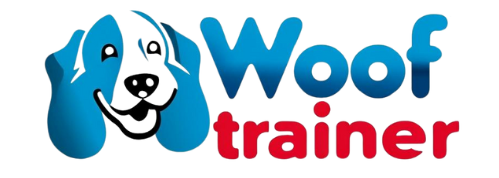When a dog inhales its food in seconds, what begins as convenience can become a risk to digestion, choking, and even life-threatening conditions. For many pet owners, a slow feeder stainless steel dog bowl seems like a promising solution. But do these bowls really deliver on their promises? This article explores what science says, practical experiences, benefits, limitations, and how to decide whether one is right for your dog.
Why Eating Too Fast Is a Problem
Before evaluating slow feeders, it’s essential to understand why fast eating carries risks.
- Swallowed air & gas: Fast eaters often gulp in air along with food, leading to gas buildup. This is one of the contributing factors to gastric dilatation-volvulus (GDV) in large or deep-chested dogs. The AKC warns that eating too quickly may increase the risk of bloat. (AKC)
- Choking, gagging, vomiting: Without sufficient chewing, large pieces of food or poorly masticated kibble may trigger gag reflex, vomiting, or choking.
- Pronounced digestive stress: Quick passage of food through the mouth and esophagus means less mechanical digestion and possibly less time for enzymatic/salivary aid, which can stress the stomach.
Thus, encouraging slower, more deliberate feeding tends to offer benefits both for comfort and health.
What Is a Slow Feeder Stainless Steel Dog Bowl?
A slow feeder stainless steel dog bowl is a metal feeding dish (usually food-grade stainless steel) that has raised ridges, dividers, or maze-like obstacles built into its interior. These structures force the dog to maneuver around them, pick smaller morsels, and chew more rather than gulp. Because it is stainless steel, the bowl retains advantages like durability, hygienic surface, resistance to rust, and ease of sanitization.
Some versions are fully formed slow feeders, others are slow-feeder inserts (a stainless steel bowl with removable or fixed maze parts). The key is the obstacle design must be balanced: enough to slow eating, without causing frustration or feeding refusal.
What the Evidence & Expert Opinion Say
In my review of U.S.-based (and international) advice and studies, these are the most relevant findings and gaps:
What is well supported:
- Many expert sources (AKC, Dogster, Chewy) endorse slow feeders (or alternatives) as part of strategies to reduce choking risk, limit air swallowing, and reduce incidents of vomiting or regurgitation among fast eaters.
- Anecdotal / user reports indicate significant reduction in speed of consumption (often 2–5× slower) and improvements in digestive comfort (less gagging, vomiting) when a slow feeder is used.
- Mental enrichment is frequently cited as a side benefit: these bowls engage dogs more, turning feeding into a small puzzle.
What is less well established / gaps:
- There is limited controlled scientific research specifically quantifying how much slow feeder stainless steel bowls reduce GDV risk or long-term outcomes versus plain bowls.
- Few studies focus on breed-specific design requirements (e.g. brachycephalic vs long-nosed dogs) for slow feeders made of stainless steel. Many designs are plastic, so stainless steel versions are less widely tested.
- Little published data on negative effects, such as frustration, wear on teeth, or refusal of food when the obstacle design is too complex.
Benefits of Slow Feeder Stainless Steel Dog Bowls
Based on what is well documented, here are the main advantages:
- Slowed ingestion
The primary purpose is met: dogs take longer to finish meals, chew more thoroughly, and reduce gulping. Less air swallowed means lower immediate risk of choking or regurgitation. - Digestive comfort and lower risk of vomiting or regurgitation
Many pet owners switching to slow feeders report fewer episodes of upset stomach or regurgitation. While not guaranteed, the mechanism (i.e. allowing food to be broken down more in the mouth) makes physiological sense. - Potential reduction of bloat risk
Though evidence is mixed, reducing rapid ingestion and air swallowing is one modifiable factor in bloat risk. Experts point to slow feeders as part of good feeding practices. - Enrichment & behavior benefits
Feeding becomes less of a “task to finish quickly” and more of an activity. This can reduce food-guarding, boredom, and may help with behavioral issues tied to mealtime stress. - Hygiene and durability (with stainless steel)
Stainless steel slow feeders avoid many of the downsides of plastic: less risk of scratching (which harbors bacteria), more resistance to odor or chemical leaching, easy to clean and sanitize. For more on stainless steel advantages, see The Ultimate Guide to Stainless Steel Dog Bowls.
Limitations & Potential Drawbacks
To make an informed choice, owners should also be aware of possible downsides:
- Frustration or feeding refusal: If the obstacle design is too complex or the dog is not accustomed to it, some dogs may become frustrated and try to avoid eating.
- Suitability by muzzle shape / breed: Dogs with very short snouts (brachycephalics) may struggle with deep ridges or maze walls. If obstacles are too tall relative to muzzle depth, it increases effort, possibly discomfort.
- Dental or jaw issues: Dogs with missing teeth, periodontal disease, or jaw pain may find a slow feeder painful or difficult.
- Cleaning complexity: More nooks and ridges mean more places for food residue; stainless steel helps, but design still matters. Poor cleaning can lead to bacterial buildup.
- Cost and accessibility: High-quality stainless steel versions tend to cost more than plastic ones. Also, fewer models may be available locally, especially with breed-friendly shapes.
- Not a cure-all: Feeding environment, portion size, food type (kibble vs wet), and feeding frequency also matter. Slow feeder bowls are one tool among many.
How to Choose the Right Slow Feeder Stainless Steel Dog Bowl
If after reviewing benefits and limitations you’re considering one, here are criteria to help select the best.
| Feature | What to Look for & Why |
|---|---|
| Obstacle design & complexity | Start with simpler ridges or partitions; avoid very deep walls for short-snouted breeds. |
| Bowl depth and diameter | The bowl should allow comfortable access without forcing awkward head posture. Large dogs need wide, shallow paths; small dogs need appropriately sized geometry. |
| Food-grade stainless steel (304 / 18/8 or equivalent) | Avoid plated, low-grade, or coated materials that might degrade. Stainless steel is non-porous, hygienic, and durable. |
| Non-slip base or stability | Because dogs may push or paw while getting food out, stability reduces mess and frustration. |
| Ease of cleaning | Dishwasher-safe, smooth joins, minimal crevices. Clean after each meal when possible. Use guidelines in How to Properly Clean and Sanitize Your Stainless Steel Dog Bowl to avoid germ growth. |
| Size / capacity | Match the bowl size and internal layout to the dog’s daily portion, breed size, and eating speed. |
| Adjustments & variety | Be ready to try different obstacle styles or change them over time for mental enrichment; maybe rotate designs. |
Practical Tips: How to Introduce a Slow Feeder Bowl
- Gradual introduction: Start by replacing one meal per day with the slow feeder. Let the dog investigate and get used to the new texture/obstacles.
- Mix with familiar feeding: To prevent feeding refusal, part of the meal in the familiar bowl for a few days, then shift gradually.
- Positive reinforcement: Praise or reward calm, slow eating. Do not scold for fast eating—encourage the slower behavior.
- Monitor behavior and digestion: If you see new signs of stress, reluctance to eat, or digestive upset, pause and reassess.
- Combine with feeding strategy changes: Using multiple meals per day, changing kibble size or texture, or using puzzle feeders helps amplify benefits. Chewy’s guide recommends combining slow feeders with environmental enrichment.(Chewy)
When a Slow Feeder Steel Bowl May Not Be the Best Choice
There are situations where such a bowl might not be advisable or optimal:
- A dog with known jaw/dental problems or missing teeth.
- A dog absolutely refusing to use the bowl because of muzzle shape or strong eating habit; sometimes simpler feeding modifications or veterinary diet changes are easier.
- If the feeding is done of very soft/wet food that gets matted in grooves. In those cases, cleaning becomes too burdensome.
- For high-risk breeds for GDV, if the dog has other risk factors, ensuring feeding height, posture, and feeding schedule are optimized might be more important.
Bottom Line: Do They Really Work?
Yes – slow feeder stainless steel dog bowls do work for many dogs. For dogs that eat too quickly, they typically:
- increase chewing
- reduce gulping and air swallowing
- lessen the frequency of regurgitation or vomiting
- help improve digestive comfort
- provide mental engagement
However, they are not a miracle cure. Their effectiveness depends heavily on matching the obstacle design to your dog’s anatomy and temperament, maintaining hygiene, and integrating them into a broader feeding strategy (portion control, feeding schedule, environment).
If one picks a well-designed stainless steel slow feeder, uses it consistently, and monitors the dog’s adaptation, the likely outcome is improved mealtime experiences and fewer digestive issues.
FAQ
-
How much slower will a dog eat with a slow feeder stainless steel dog bowl?
It depends on the obstacle complexity and on the dog. Many users report eating times increase 2 to 5 times more than before. Some bowls with simple ridges may slow moderately; more complex maze bowls slow more but risk frustration. -
Will my fast-eating breed benefit, or could the obstacle be too difficult?
Most breeds benefit, but muzzle shape matters. Brachycephalic dogs (short snouts) may struggle with deep ridges. Choose designs with shallow obstacles for such breeds. -
Are stainless steel slow feeders safer than plastic ones?
In many respects, yes: stainless steel resists scratching and odor, is easier to sanitize, doesn’t leach chemicals, and tends to be more durable. However, stainless steel doesn’t eliminate all risks—design and cleaning still matter. -
Can I use a slow feeder bowl with wet food, raw food, or mixed meals?
Sometimes. Wet/raw meals are workable if the bowl’s design doesn’t trap soft food in places hard to clean. Always rinse and sanitize thoroughly to avoid bacterial buildup. -
What should I do if my dog refuses to eat from the slow feeder?
Go slower in the transition: allow use of old bowl, mix old + new, show food in the grooves, praise. If refusal persists, try a simpler design or alternate feeding method. Veterinary consultation may help if underlying pain or dental issues exist. -
Does using a slow feeder eliminate the need to change feeding schedule or portion size?
No. Slower eating is valuable, but pairing with proper portioning (multiple small meals rather than one large meal) and controlling feeding environment (reducing competition, stress) increases benefits. -
Are there any risks associated with slow feeder bowls?
Possible risks include dental wear if the dog chews aggressively on metal obstacles, frustration or feeding refusal, hygiene issues if cleaning is neglected, and cost considerations. These risks are mitigated by choosing good design, monitoring the dog, and maintaining hygiene.
Related Resources
When comparing models, obstacle styles, and narrowing down what features you value, A Buyer’s Guide to the Best Stainless Steel Dog Bowls offers comparisons and checklists

